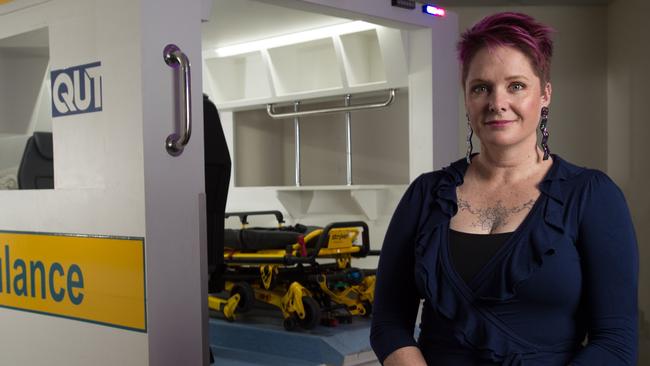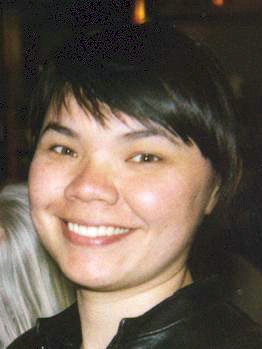Mission to help bring out our best
University researchers are at the forefront of work to improve the human performance of military forces.

The foundation of success in combat is the physical and cognitive performance of military personnel. While technology plays an undeniably important role — from the bow and arrow to the Lockheed Martin F-35 Lightning II — it has always been secondary to the people who use it. People, not equipment, win battles.
Militaries have long sought to improve the human performance of their forces. And university researchers are at the forefront of analysing, understanding and delivering enhancements in strength, attention, focus, learning, adaptability and resistance to fatigue.
Among those doing foundational work on the impact of fatigue and sleep deprivation on human performance is Siobhan Banks, co-director of the University of South Australia’s Behaviour-Brain-Body Research Centre.
Banks’s research sits at the nexus of biology, behaviour and technology. She is examining the impact of sleep deprivation, shift work and stress on psychological and physiological functioning, and how countermeasures may be used to minimise the impacts of disturbed sleep.
Her mission is to understand how to have people performing at their best when they are in unusual situations, such as being on watch for 24, 48 or 72 hours straight, overlaid by large amounts of stress. And part of the answer is, believe it or not, coffee.
“There’s a lot we don’t know about how to get the absolute optimum out of caffeine,” Banks says.
“We know there are genetic differences in sensitivity to caffeine, so how do we tailor its usage to individuals so it is most effective?”
The answer? Strategic caffeine consumption — what are the best times of day to have it and how much? Is drinking the best way to take it? Or what about in the form of gum or tablets? Is it only good for reaction-time tasks or what about problem-solving and teamwork tasks? What are the side effects? Does it make people irritable or suffer insomnia?

“While we know that people are more likely to be alert with caffeine, there are lots of nuances we don’t understand about how we can be strategic in ensuring they use it in the most advantageous way.”
Her research also extends to napping, or strategic sleep opportunities, for people on night shift or extended watch, and how that interacts with diet — what and when to eat so as not to induce fatigue.
“We are looking at the implications of how much and what people eat while on shift and how that impacts their cognitive performance and health,” she says.
“We know that eating out of step with normal circadian rhythms entails putting the body under stress. It has metabolic implications and longer-term health impacts. But it also affects certain cognitive tasks, such as those that require sustained attention.”
Banks says a lot of her research is “very nuanced”. “Often we are looking to improve performance by just 1 per cent or 2 per cent — similar to elite athletes.
“In these extreme environments, that gives an edge and enables them to go a little bit harder and longer than they ordinarily might be capable of if we didn’t take these things into consideration,” Banks says.
Indeed, the work may be nuanced, but it has attracted international attention with projects funded not just in Australia, but also by the US Air Force, NASA, Lockheed Martin and Thales, among others.
Over at the University of Adelaide, Associate Professor Anna Ma-Wyatt works at the interface of human perception and technology. Specifically, she is investigating how humans use vision to interact with their environment and how that impacts on the use of augmented-reality (AR), spatial attention and cognitive performance.

Ma-Wyatt’s work is in the area of perception — understanding how humans use spatial information to interact with the environment — or what is called active vision. When we engage in a goal-directed movement such as picking up a cup or catching a ball, that is called goal-directed movement.
Ma-Wyatt is particularly interested in how our eyes work in stereo — perceive things slightly differently — to get a single estimate of an object’s position and how to use that information to interact with the environment.
But somewhere between 30 per cent and 50 per cent of the population have compromised stereo vision, while AR (which is increasingly central to military exercises) relies heavily on stereo vision.
“Technologies like AR provide information to human analysts and operators in many different operational environments such as getting new information to update situational awareness, like understanding the terrain of the road ahead,” Ma-Wyatt says.
“In a natural environment, people use information to guide their actions and decisions. They only use a subset of information because the brain has a limited capacity to process information.
“Advances in sensing techniques and machine learning mean that now we have more data than ever to use. The key problem then is to work out how to present that information to the human so that we are augmenting their capability and not hindering it by overloading them with information.”
Sometimes, research developments come from the most personal of experiences, as was the case for Kerri-Ann Woodbury from Queensland University of Technology.
A nursing officer who served time in the Australian Regular Army between 2007 and 2012, Woodbury wrote her PhD on the impact of deployment on the resilience of intimate relationships. From the Australian Defence Force’s perspective the research is fundamentally important because when relationships are rocky and stressed, mental performance will likely be compromised.
Woodbury’s research came from the most personal of spaces: her partner returned from deployment in Afghanistan with post-traumatic stress disorder.
“In the early days he couldn’t go out or make simple phone calls. For many people in the early stages of PTSD, they need someone to hold their hand just to do basic day-to-day stuff,” she says.
–
‘Deployment and military life isn’t the reason that relationships do poorly … that is usually more to do with poor communication and lack of trust, which is amplified by the stress of deployment.’
— Kerri-Ann Woodbury
–
For her research, Woodbury conducted in-depth interviews with 19 individuals, including people who had served on deployment and partners. Surprisingly, given the stress that the forced separation from deployment can have on relationships, only one of the couples she interviewed separated during her research.
“I found that deployment and military life isn’t the reason that relationships do poorly. That is usually more to do with poor communication and lack of trust, which is amplified by the stress of deployment,” she says. “The not knowing can be very difficult on both sides of the relationship. The person on deployment often can’t tell their partner much about what they are doing for security reasons while the person at home has a lot of time to overthink things.”
The same is true on the flip side. “The person on deployment can really start to catastrophise some of their worries,” she says.
Woodbury says while there are some pre-deployment workshops and training around relationships, application is haphazard and inconsistent. Also, partners can’t be compelled to attend.
“The information that is presented varies greatly from unit to unit, deployment to deployment,” she says. “There is no standardised evidence-based package.” But, she says, dysfunctional and broken relationships can have a huge cost to the defence forces in terms of the performance of personnel.


